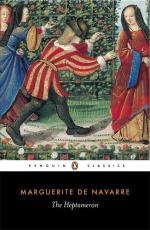Brantome (though he had an admiration for Margaret, whose lady of honour his grandmother had been, and who, according to the Bourdeilles tradition, composed her novels in travelling) thought this a pretty fashion of converse. “Voila,” he says, “l’opinion de cette bonne princesse; laquelle la tenait plus par gentillesse et par forme de devis que par creance a mon avis.” Sainte-Beuve, on the contrary, and with better reason, sees in it faith, graciousness, feminine delicacy, and piety at once. No doubt; but there is something more than this, and that something more is what we are in search of, and what we shall find, now in one way, now in another, throughout the book: something whereof the sentiment of Donne’s famous thoughts on the old lover’s ghost, on the blanched bone with its circlet of golden tresses, is the best known instance in English. The madcap Nomerfide indeed lays it down, that “the meditation of death cools the heart not a little.” But her more experienced companions know better. The worse side of this Renaissance peculiarity is told in the last tale, a rather ghastly story of monkish corruption; its lighter side appears in the story, already referred to, of the “Grand Prince” and his pious devotions on the way to not particularly pious occupation. But touches of the more poetical and romantic effects of it are all over the book. It is to be found in the story of the gentleman who forsook the world because of his beloved’s cruelty, whereat she repenting did likewise ("he had much better




